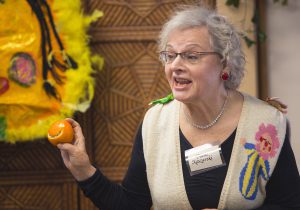By Dr. Sylvain Ehrenfeld and Dr. Reba Goodman
About 66 million years ago, a six-mile wide asteroid hit near the Yucatan Peninsula, setting off a chain reaction that wiped out the dinosaurs and roughly three-quarters of the other species on Earth.
According to a recent landmark UN report, today’s extinction rate is unprecedented in human history. Around 1 million animal and plant species are now threatened with extinction, many within years or decades. Extinction is part of evolution, by natural selection, but not like this. Human activity is a driving force in this unprecedented vanishing of species. Some of the causes are reduction of habitats, deforestation, pollution, and over-fishing. Climate change exacerbates these problems. This time a giant asteroid isn’t to blame—we are.
The ongoing rate of species extinction, coupled with the loss of genetic diversity, threatens the interdependent ecosystems and the complex web of life of which we are part and which is essential to our well-being.
Extinction is a Warning
In pushing other species to extinction, humanity is actively sawing off the limb on which we are perched. The extinction of species is a warning that we have a serious problem and we are part of it.
Nature is essential for human existence. For example, pollinators are one group that humans can’t do without. Ninety percent of flowering plants and 75 percent of all types of food crops rely on pollination by animals, birds, bats, or insects.
One-third of all our food—fruits and vegetables—would not exist without pollinators visiting flowers. Honey bees, the primary species that fertilizes food-producing plants, have suffered dramatic declines in recent years, maybe due to synthetic pesticides.
Hundreds of millions of people rely on daily protein from wild-caught fish, including many fish that depend on healthy coral reefs. Because of climate change, coral reefs are in trouble. We are at war with fish and we are winning.
Other ecosystems services we can expect from biodiversity are clean air, clean water, healthy soil, and raw materials. We are playing ecological roulette.
What can be done?
Awareness Can Lead to Action
With enough awareness and publicity, humans sometimes act. For example, Rachel Carson in her historic book “Silent Spring” alerted people to the dangers posed by synthetic pesticides. Within a decade most uses of DDT had been prohibited, which is why bald eagles can still live in the United States. Another example is John Muir, whose writing about the damage being done in the mountains of California led to the creation of Yosemite National Park.
The UN has been active in this area. In 1992, a landmark treaty, The Convention of Biological Diversity, protected some land and ocean areas from commercial uses.
An updated proposal called the Global Deal for Nature will be further discussed and refined in 2020 at a meeting in China. The US never ratified the original treaty. President Clinton signed it in 1993 but the Senate failed to ratify. It is unlikely that the current administration and the current Senate will ratify. We hope that publicity will promote discussion of this important issue in the coming presidential election.
Dr. Sylvain Ehrenfeld, International Humanist and Ethical Union Representative to the United Nations, and Dr. Reba Goodman are members of the Ethical Culture Society of Bergen County.


